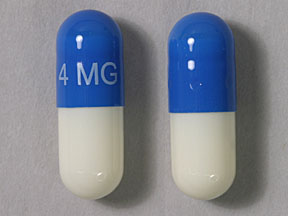Zanaflex Dosage
Generic name: TIZANIDINE HYDROCHLORIDE 2mg
Dosage form: capsule
Drug class: Skeletal muscle relaxants
Medically reviewed by Drugs.com. Last updated on May 5, 2025.
Dosing Information
Zanaflex Capsules ®or Zanaflex ®tablets may be prescribed with or without food. Once the formulation has been selected and the decision to take with or without food has been made, this regimen should not be altered.
Food has complex effects on tizanidine pharmacokinetics, which differ with the different formulations. Zanaflex Capsules and Zanaflex tablets are bioequivalent to each other under fasting conditions (more than 3 hours after a meal), but not under fed conditions (within 30 minutes of a meal). These pharmacokinetic differences may result in clinically significant differences when switching administration of tablet and capsules and when switching administration between the fed or fasted state. These changes may result in increased adverse events, or delayed or more rapid onset of activity, depending upon the nature of the switch. For this reason, the prescriber should be thoroughly familiar with the changes in kinetics associated with these different conditions .
The recommended starting dose is 2 mg. Because the effect of Zanaflex peaks at approximately 1 to 2 hours post-dose and dissipates between 3 to 6 hours post-dose, treatment can be repeated at 6 to 8 hour intervals, as needed, to a maximum of three doses in 24 hours.
Dosage can be gradually increased by 2 mg to 4 mg at each dose, with 1 to 4 days between dosage increases, until a satisfactory reduction of muscle tone is achieved. The total daily dose should not exceed 36 mg. Single doses greater than 16 mg have not been studied.
Dosing in Patients with Renal Impairment
Zanaflex should be used with caution in patients with renal insufficiency (creatinine clearance < 25 mL/min), as clearance is reduced by more than 50%. In these patients, during titration, the individual doses should be reduced. If higher doses are required, individual doses rather than dosing frequency should be increased .
Dosing in Patients with Hepatic Impairment
Zanaflex should be used with caution in patients with any hepatic impairment. In these patients, during titration, the individual doses should be reduced. If higher doses are required, individual doses rather than dosing frequency should be increased. Monitoring of aminotransferase levels is recommended for baseline and 1 month after maximum dose is achieved, or if hepatic injury is suspected .
Drug Discontinuation
If therapy needs to be discontinued, particularly in patients who have been receiving high doses (20 mg to 36 mg daily) for long periods (9 weeks or more) or who may be on concomitant treatment with narcotics, the dose should be decreased slowly (2 mg to 4 mg per day) to minimize the risk of withdrawal and rebound hypertension, tachycardia, and hypertonia .
Frequently asked questions
More about Zanaflex (tizanidine)
- Check interactions
- Compare alternatives
- Pricing & coupons
- Reviews (116)
- Drug images
- Side effects
- During pregnancy
- Generic availability
- Support group
- Drug class: skeletal muscle relaxants
- En español
Patient resources
Professional resources
Other brands
Related treatment guides
See also:
Further information
Always consult your healthcare provider to ensure the information displayed on this page applies to your personal circumstances.


